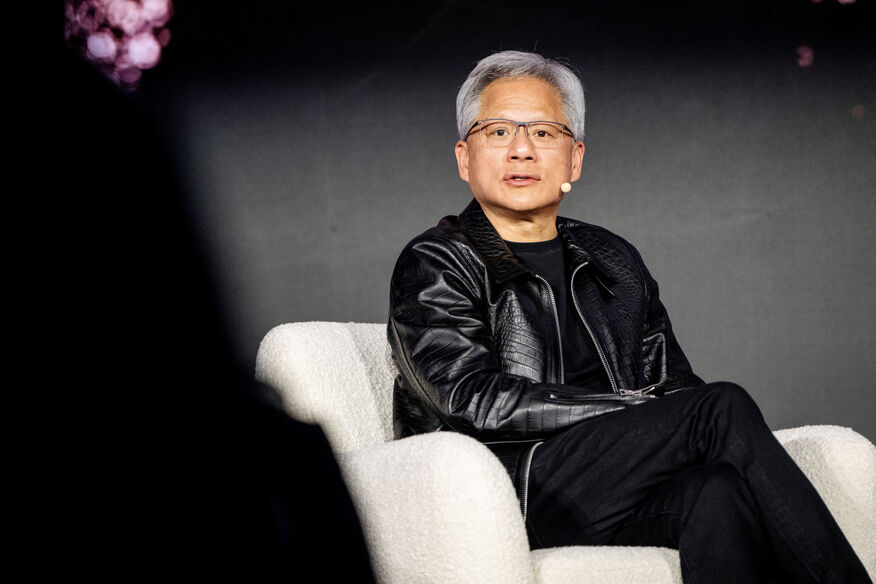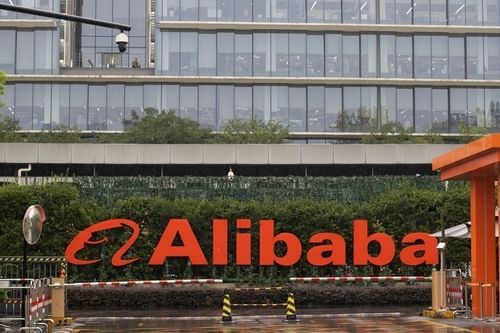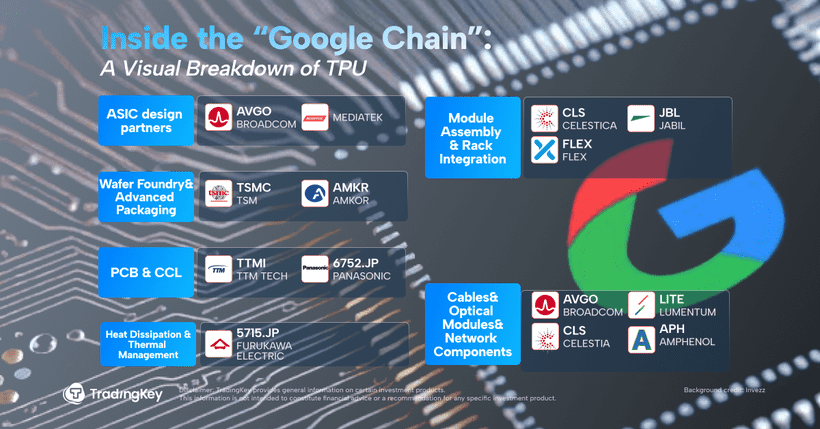Is $4 Trillion Just the Beginning? Citi Backs Nvidia’s AI Dominance

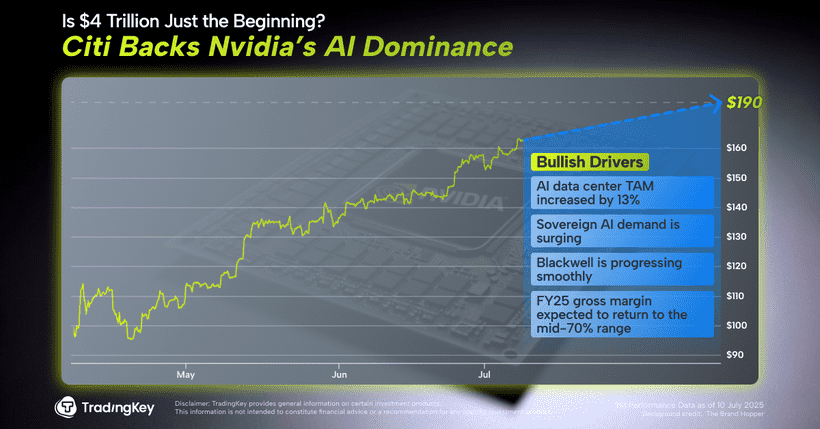
TradingKey - Nvidia (NVDA) made headlines again on Wednesday after its stock surged to 164 during early U.S. trading, pushing its market value past a historic 4 trillion. That makes it the first chip company ever to cross that mark.
After such an incredible run, many investors are asking the obvious question—can the stock still go higher? According to Citi, the answer is a clear yes. In its latest report, the firm reiterated its Buy rating and raised its target price from $180 to $190.
Citi: AI Market Growing Faster Than Expected — Sovereign AI + Blackwell Are Big Drivers
Citi bumped up its forecast for the data center semiconductor market, now expecting global TAM (total addressable market) to hit $563 billion by 2028, a 13% jump from its previous estimate. One major factor is the stronger-than-expected spending on sovereign AI infrastructure—basically, government-funded AI projects building their own national AI capabilities.
Nvidia is playing a leading role in almost every major sovereign AI rollout. Citi notes that this segment alone is already contributing billions in revenue starting FY2025, and could take up even more share in 2026.
Notably, Custom AI chips (like ASICs) and high-bandwidth memory (HBM) are also helping to expand TAM. Broadcom (AVGO) is the key player here, and this category is growing at a healthy 32% CAGR.
Another reason for Citi’s optimism: the rollout of Nvidia’s next-gen Blackwell platform is on track and clearing key hurdles. According to the Financial Times, Nvidia has recently solved several manufacturing issues with its GB200 chip—such as overheating, leakage in the liquid-cooling system, and chip interconnect failures—by teaming up with partners across the supply chain.
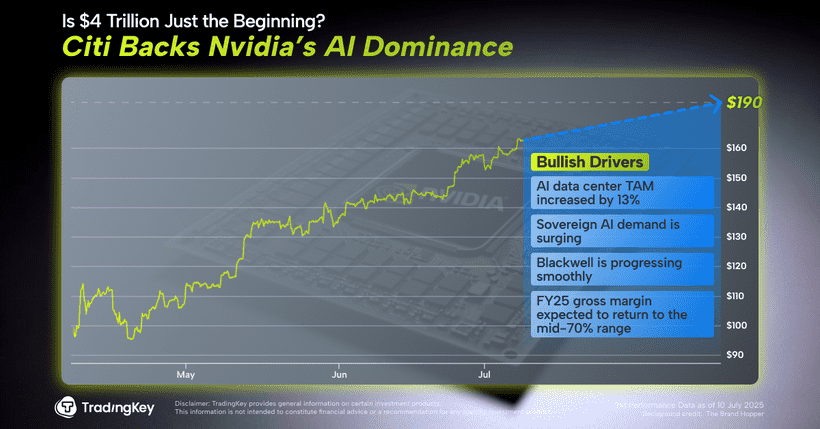
At Computex, Nvidia publicly confirmed that Blackwell production is now running smoothly, easing market concerns around supply bottlenecks and production yield.
Earlier fears around GB200 were mainly tied to its complex CoWoS-L packaging and some initial design flaws, but with Nvidia now drawing on lessons learned from prior shifts like Hopper-to-B200, the upcoming GB300 rollout is expected to go even more smoothly.
All of this bodes well for margins. Citi sees Nvidia’s gross margins rebounding to the mid-70% range in FY2025 as Blackwell ramps and the product mix strengthens.
U.S. Industrial Policy Acts as a Tailwind — Nvidia Indirectly Benefits
Nvidia is also a likely winner from the U.S. government’s new industrial stimulus plan—dubbed the “Big Beautiful Bill.” Recently passed by Congress, the bill dramatically increases the tax credit for U.S. chip fab construction from 25% to 35%, giving a strong financial push for advanced manufacturing at home.
While Nvidia isn't a chip manufacturer itself, it relies on an advanced and efficient supply chain to keep rolling out its high-end AI products. The bill will help ease bottlenecks and shorten delivery times, particularly for Nvidia’s rack-scale liquid-cooled AI systems like the GB200.
Major foundry partners like TSMC, Intel, and Micron are already accelerating their U.S. expansion plans to take advantage of the incentives, and Nvidia is closely aligned with those efforts through deeper integration with upstream players.
China Headwinds Persist — But Nvidia Is Adjusting Its Strategy
Tensions around AI chip exports to China haven’t fully gone away. The U.S. still restricts sales of Nvidia’s top-end chips to Chinese customers. Although Nvidia had previously released a China-compliant H20 version, CEO Jensen Huang recently said there was very little room left to further downgrade the Hopper-based line:
"That’s the limit of what we can do to Hopper, and we've cut it down to there's not much left to cut," he said. "Anybody who thought that one chess move to somehow ban China from H20s would somehow cut off their ability to do AI is deeply uninformed."
Still, Nvidia isn’t standing still. FT reports the company is planning to open a new R&D center in Shanghai to better understand local customers’ needs and navigate Washington's regulatory demands. The Shanghai team will also contribute to global projects—like chip validation, product tuning, and autonomous driving development—so this won’t just be a regionally focused unit.
CoreWeave and the Expanding AI Stack: Software, Platforms, and More
Nvidia is doubling down on building a complete AI ecosystem—from chips and computing platforms to frameworks and vertical solutions. At its GTC 2025 event, it released systems like DGX Spark and DGX Station powered by Blackwell Ultra, which aim to bring more AI compute capabilities to the edge.
Its CUDA ecosystem continues to grow stronger, reinforcing Nvidia’s lead in AI software infrastructure.
One of the linchpins of this ecosystem is CoreWeave, a key cloud service partner in which Nvidia holds a sizable equity stake. CoreWeave was the first hyperscaler to go live with Nvidia’s new GB300 NVL72 platform and has tightly integrated its own software stack with Nvidia hardware.
Since going public in early 2025, CoreWeave has exploded in both scale and revenue—posting a 420% YoY increase in Q1 to nearly $1 billion in sales. It also signed a five-year deal with OpenAI to provide AI training infrastructure using Nvidia’s Blackwell and H100 GPUs.



